
Albert II was the margrave of Brandenburg-Kulmbach (Brandenburg-Bayreuth) from 1527 to 1553. He was a member of the Franconian branch of the House of Hohenzollern. Because of his bellicose nature, Albert was given the cognomen Bellator during his lifetime. Posthumously, he became known as Alcibiades.

Frederick was the last Burgrave of Nuremberg from 1397 to 1427, Margrave of Brandenburg-Ansbach from 1398, Margrave of Brandenburg-Kulmbach from 1420, and Elector of Brandenburg from 1415 until his death. He became the first member of the House of Hohenzollern to rule the Margraviate of Brandenburg.

The House of Welf is a European dynasty that has included many German and British monarchs from the 11th to 20th century and Emperor Ivan VI of Russia in the 18th century. The originally Franconian family from the Meuse-Moselle area was closely related to the imperial family of the Carolingians.
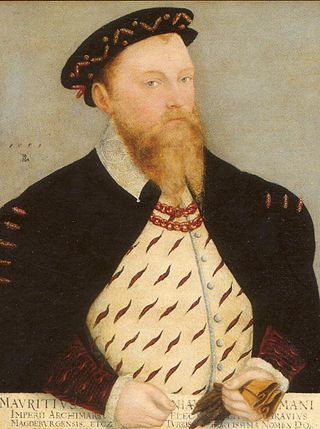
Maurice was Duke (1541–47) and later Elector (1547–53) of Saxony. His clever manipulation of alliances and disputes gained the Albertine branch of the Wettin dynasty extensive lands and the electoral dignity.

Christian the Younger of Brunswick-Wolfenbüttel, a member of the House of Welf, titular Duke of Brunswick-Lüneburg and administrator of the Prince-Bishopric of Halberstadt, was a German Protestant military leader during the early years of the Thirty Years' War, fighting against the forces of the Imperial House of Habsburg, Habsburg Spain, and the Catholic League.
Magnus I (1304–1369), called the Pious, was duke of Brunswick-Lüneburg.
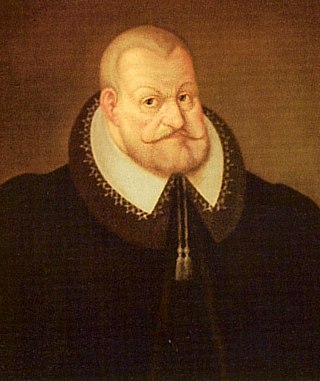
Julius of Brunswick-Lüneburg, a member of the House of Welf, was Duke of Brunswick-Lüneburg and ruling Prince of Brunswick-Wolfenbüttel from 1568 until his death. From 1584, he also ruled over the Principality of Calenberg. By embracing the Protestant Reformation, establishing the University of Helmstedt, and introducing a series of administrative reforms, Julius was one of the most important Brunswick dukes in the early modern era.

Henry IV the Pious, Duke of Saxony was a Duke of Saxony from the House of Wettin. Succeeding his brother George, Duke of Saxony, a fervent Catholic who sought to extinguish Lutheranism by any means possible, Henry established the Lutheran church as the state religion in his domains.
The Second Margrave War was a conflict in the Holy Roman Empire between 1552 and 1555. Instigated by Albert Alcibiades, Margrave of Brandenburg-Kulmbach and Brandenburg-Bayreuth, who was attempting to form a Duchy of Franconia under his rule, the war resulted in widespread devastation in Franconia, while also affecting the Rhineland and Lower Saxony.

Henry V of Brunswick-Wolfenbüttel, called the Younger,, a member of the House of Welf, was Duke of Brunswick-Lüneburg and ruling Prince of Brunswick-Wolfenbüttel from 1514 until his death. The last Catholic of the Welf princes, he was known for the large number of wars in which he was involved and for the long-standing affair with his mistress Eva von Trott.
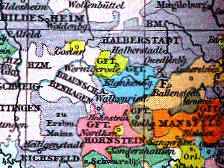
The County of Blankenburg was a state of the Holy Roman Empire. Its capital was Blankenburg, it was located in and near the Harz mountains.
Catherine of Brunswick may refer to:

Emilie of Saxony was the third wife of Margrave George the Pious of Brandenburg-Ansbach. Since his two earlier wives died before his accession, she was the only one to hold the title of Margravine.

Elizabeth of Brandenburg-Küstrin, was a princess of Brandenburg-Küstrin and margravine of Brandenburg-Ansbach and Brandenburg-Kulmbach by marriage.

Catherine of Brunswick-Lüneburg was a member of the House of Welf, a princess of Brunswick-Lüneburg and by marriage, the Electress of Saxony.
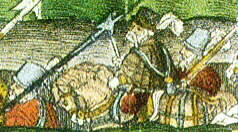
Henry IV of Plauen, was High Chancellor of the Kingdom of Bohemia, Burgrave of Meissen, Lord of Plauen, Gera, Greiz, Schleiz and Bad Lobenstein, Lord of Toužim, Hartenštejn Castle, Andělská Hora Castle and Žlutice. He also used the traditional title of Lord of Lázně Kynžvart and, apart from an intermezzo in 1547, he was Lord of Bečov nad Teplou as well.
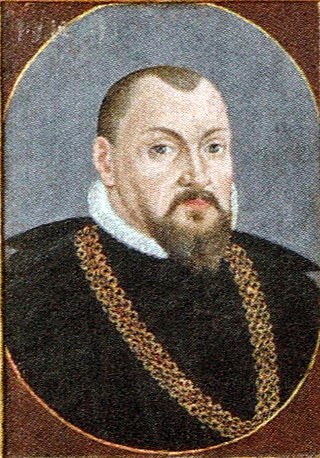
John of Brandenburg-Küstrin, was a member of the House of Hohenzollern and a Margrave of Brandenburg-Küstrin.

Elisabeth of Bavaria-Landshut, nicknamed "Beautiful Beth", was an Electress of Brandenburg by marriage to Frederick I, Elector of Brandenburg. She acted as regent of Brandenburg during the absence of her spouse.

Rudolf I, a member of the House of Ascania, was Duke of Saxe-Wittenberg from 1298 until his death. By the Golden Bull of 1356 he was acknowledged as Elector of Saxony.

Hedwig of Brandenburg, a member of the Hohenzollern dynasty, was Duchess of Brunswick-Lüneburg and Princess of Brunswick-Wolfenbüttel from 1568 to 1589, by her marriage with the Welf duke Julius.


















